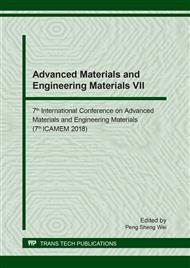p.256
p.262
p.268
p.272
p.277
p.282
p.289
p.294
p.300
Analysis of Microbial Community in Heap Bioleaching of Low-Grade Copper Sulfide Ores
Abstract:
High-throughput sequencing technology also known as "next generation" sequencing technology, compared with the traditional sequencing method has the characteristics of fast speed, high flux, low cost. In recent years the technology in the detection of microbial diversity has been fully applied. In this study, the microbial community of ore heap in different area and different depth was studied by using this method. The results showed the bio - heap leaching of low - grade secondary copper sulfide ore in Zijinshan from China could effectively recover the copper in the ore. The number of microorganisms in the center was significantly larger than that on the edge of ore heap, and as the depth increases in the heap, the number of microorganisms decreases. The dominant bacteria in the ore heap center was Acidithiobacillus ferrooxidans, in addition there were also some Sulfobacillus thermosulfidooxidans, Ferroplasma cupricumulans, Acidithiobacillus caldus and a small amount of Leptospirillum ferriphilum in the center of the ore heap. Unlike the ore heap center, Sulfobacillus thermosulfidooxidans was the main species on the edge of the ore heap, moreover Acidithiobacillus ferrooxidans, Ferroplasma cupricumulans, Acidithiobacillus caldus and a small amount of Leptospirillum ferriphilum were found on the edge of the ore heap. In addition, some heterotrophic bacteria such as Pseudomonas, Serratia, Sediminibacterium, Stenotrophomonas, Brevundimonas and Variovorax were found both in the center and the edge of the sample, these heterotrophic bacteria may be beneficial for the leaching of valuable metals.
Info:
Periodical:
Pages:
277-281
Citation:
Online since:
August 2018
Authors:
Price:
Сopyright:
© 2018 Trans Tech Publications Ltd. All Rights Reserved
Share:
Citation:


